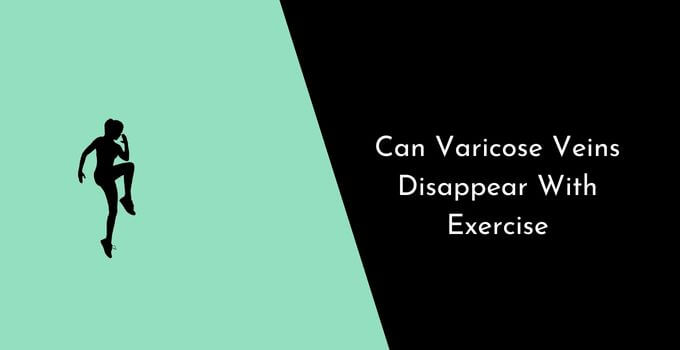In this article I am going to talk with you about something that affects many people: varicose veins. For those of us who have them, we know how uncomfortable and unsightly they can be.
But what if I told you there’s a way to make them disappear? Well, it looks like exercise might just do the trick! In this article, we’ll explore whether or not varicose veins can really disappear with regular physical activity.
I’m sure many of us are wondering why exercising would help get rid of our varicose veins in the first place. We’re here to answer that question for you today — and more!
After reading this article, you’ll have all the facts on hand to decide if working out is worth trying to eliminate your varicose veins once and for all.
So let’s dive right in and find out exactly how exercise could affect these pesky problems!
Check: Best Medicine for Varicose Veins
Can Exercise Shrink Varicose Veins?
Many people think that varicose veins can’t be reduced or prevented through exercise. But the truth is, with a few lifestyle and dietary changes as well as simple yoga poses, you can shrink your varicose veins!
The first step in reducing your varicose veins is to make some small adjustments to your daily routine. Start by elevating your legs when possible – this helps reduce swelling and discomfort caused by varicose veins.
Additionally, wearing compression stockings will help improve circulation in your lower extremities.
Finally, incorporating certain massages and yoga poses into your day-to-day activities can also work wonders for shrinking those annoying bulging blue lines on your skin.
These minor changes may not seem like much but they are important steps towards managing varicose veins. Taking control of our health is key to living a long and healthy life free from pain associated with these conditions.
So don’t give up just yet – start making healthier choices today that could lead to better vein health tomorrow!
What Is The Best Exercise For Varicose Veins?
When it comes to exercising for varicose veins, the best approach is usually one that involves low-impact activities and lifestyle changes.
Walking, cycling, leg elevation, calf exercises, flexing and pointing feet, swimming, and restorative yoga are all beneficial.
It’s important to be mindful of safety while exercising too; listen to your body if you start feeling any pain or discomfort during an activity.
Making modifications to your diet can also help improve circulation in the legs.
Eating more fiber-rich foods like fruits and vegetables can help reduce inflammation in the veins.
Additionally, avoiding salty snacks and fried foods may help reduce swelling caused by fluid retention.
Lastly, drinking plenty of water helps keep the blood flowing freely throughout your body.
Incorporating these exercise recommendations into a regular routine along with dietary adjustments will not only benefit those suffering from varicose veins but their overall cardiovascular health as well.
With consistent practice over time, symptoms associated with this condition should begin to ease off gradually until they eventually disappear completely.
What Exercisse Veinses Are Bad For Varicose Veins?
Many people believe that exercise can help reduce the symptoms of varicose veins, but not all exercises are beneficial. In fact, certain types of exercise, such as high-impact aerobics and heavy weightlifting, can actually make their condition worse.
According to research, nearly one in four Americans suffer from varicose veins–a statistic that may surprise many readers!
The key is to engage in low- or moderate-intensity activities like stretching exercises and yoga poses instead of more intense aerobic workouts. These activities can help improve circulation without putting too much strain on the legs.
It’s also important to avoid heavy resistance training drills and weightlifting sessions if you have varicose veins since these exercises can increase pressure on the weakened vein walls and cause further discomfort.
However, it’s still possible to do some strength training by using lighter weights with proper form while taking regular breaks to move around throughout your workout session.
Additionally, be sure to stay hydrated during your workouts, so your body can better regulate its temperature and keep blood flowing efficiently through your veins.
Conclusion
In conclusion, exercise can be a great way to reduce the appearance of varicose veins. While there is no guarantee that exercising alone will make your veins completely disappear, it can certainly help improve their appearance and reduce associated symptoms.
My advice is to focus on low-impact exercises like walking or swimming in order to increase circulation without putting too much strain on your legs. Avoid any activities that involve heavy lifting and jumping as these could worsen the condition.
With regular exercise, you should start to see improvements over time!
Affiliate Disclosure: Some of the links in this post are affiliate links, which means I may earn a small commission if you make a purchase through those links. This comes at no extra cost to you. Thank you for your support!

